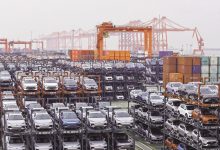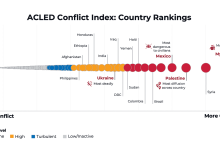The Impact of the Covid-19 Crisis on the European Green Deal
A Focus on Romania and Southeast Europe
The COVID-19 outbreak prompted governments worldwide to impose unprecedented restrictions on travel and economic activity. Coupled with a drop in global oil prices, which it largely caused, this crisis is producing imbalances in the energy sector, affecting both investments and the transition to decarbonisation. The dip in carbon prices, also a result of lower energy demand, shows the adversarial impact that the coronavirus crisis can have on the recently launched European Green Deal.
Efforts are being made to ensure that the economic recovery measures adopted at EU and national levels are in line with the long-term climate efforts. In this regard, particular attention should be given to the Southeast European member states that are both more vulnerable to such economic shocks and face distinct challenges in the energy transition.
In Romania, a drop in energy prices threatens further investments in the sector, while potentially ill-conceived governmental interventions risk creating lasting and unforeseen imbalances. In transportation, the renewal rate of vehicles is discouraged by low oil prices, while an influx of second-hand vehicles from Western Europe will further disincentivise the replacement of internal combustion engine cars. In the buildings sector, facing stricter and more costly energy performance standards, and largely dependent on shrinking public funds, the renovation rate of buildings could also be negatively affected.
In order to address this multifaceted crisis, an economic recovery plan should be designed to take into account both the more limited resources for countries in the Southeast Europe and the need to safeguard long-term climate objectives. Emergency short-term solutions for combatting the immediate social and economic risks of the coronavirus crisis should be combined with a set of policy and regulatory revisions that can ensure a smooth and sustainable post-crisis recovery.
Case study: Romania
As a case study, this section focuses on the effects that COVID-19 crisis has on Romania’s energy, transport and buildings sectors, and the way these are, in turn, likely to impact the early phases of the European Green Deal.
Energy prices
The energy prices in Romania plummeted to record lows in March and early April. The standard petrol price has fallen to about EUR 0.9/litre on April 10, compared to EUR 1.2/litre in early March – a fall of about 25%. On the electricity Day-Ahead Market, low demand and significant contribution of wind power generation lowered the price from about EUR 150/MWh at the beginning of March (before the current restrictions on the movement of people were imposed) to less than EUR 100/MWh a month later. Similarly, the price of natural gas on the spot platform of the Romanian Commodities Exchange (BRM) fell to an average EUR 9/MWh in the first 10 days of April from EUR 12.5 a month before.
On top of that, the Government Military Ordinance No. 4/March 29 introduced not only drastic restrictions to mobility, but also a cap on the prices of utilities and fuels, at the price level of the issuance day – a restriction difficult to enforce, given that the wholesale markets from which those commodities are purchased by the suppliers are still operating competitively and transnationally. So far, though, the market prices themselves have stayed under the level of the newly imposed price ceiling.
As mentioned before, one of the consequences of low energy prices is to disincentivise energy efficiency measures, as well as demand response measures and investments in storage – especially when coupled with the absence of strong policy incentives. Combined with diminished capital availability and market uncertainty, this will likely have a knock-on effect on new investment projects in the energy sector, in general. The more persistent the low energy prices and the depressed levels of energy demand, the more detrimental and long-lasting this effect.
A critical such example is the Neptun Deep project for the extraction of offshore natural gas from Romania’s largest confirmed Black Sea deposit. ExxonMobil, one of the two operators of the project was reported to be seeking an exit even before it announced a plan to slash USD 10 bn in capital investments in light of the combined burden of oil price and demand collapse. Meanwhile, OMV, the majority share-holder in OMV Petrom, which is the equal joint venture partner in Neptun Deep, recently announced that it will implement a cost-cutting programme equivalent to USD 4.35bn, after having repeatedly postponed the final investment decision. Along with the low prices for natural gas, an unfavourable regulatory environment for offshore explorations and, perhaps most importantly, the narrowing window of opportunity for the development of new gas projects in the EU amid ambitious climate objectives, these developments represent serious headwinds faced by the Neptun Deep project. For the European Green Deal, the protracted use of the existent energy production and infrastructure assets, many of them old, polluting and inefficient, oftentimes operating beyond their technical lifetimes, translates in flattening trajectories towards the 2030 targets for GHG emissions reduction, renewable energy sources and energy efficiency. As a result, these targets would then require redoubled ambitions and increased catch-up efforts, bolstered by raised spending for decreasing emissions and green projects. But then again, this may be particularly difficult to do, coming out of a potentially devastating economic crisis that will overstrain both public and private finances.
In the midst of a crisis, in which the entire attention span goes to immediate or short-term measures of public health, social protection and economic stimuli, the salience of the European Green Deal can only be maintained if it is understood and embraced as a source of additional resilience, economic efficiency, as well as environmental and climate protection, as opposed to distant, perfunctory targets and bureaucratic burdens, on top of the current economic challenges – especially in the Southeast European countries. In the absence of domestic promoters of such a perspective, however, the likely effect will be attempts by member states in the region to postpone and dilute climate ambitions.
ETS and power generation
Besides the depressed energy prices, another key aspect is the evolution of the EU ETS price, the main pillar of EU’s climate policies. As indicated above, the EUAs have dropped from EUR 25 in February to just above EUR 15 in mid-March, bouncing back to EUR 21 on April 9.
Under the current circumstances, it is important to understand the anti-cyclical nature of the ETS, as highlighted in a recent CEPS study: “As economic activity and allowance demand go down, so does the ETS price, thereby preventing the ETS becoming an additional burden to carbon-intensive sector.” However, the relief brought by the lower carbon price is unlikely to offer much respite to the old coal-fired power plants (PPs) in Romania and Southeast Europe, where even an EUA price of EUR 15 could be unbearable. Moreover, given the merit-order of electricity markets, in the current context of decreased energy demand and high production of low-marginal cost electricity from wind turbines, solid fossil fuel PPs are struggling to sell significant amounts of electricity on the competitive wholesale market.
On February 24, the European Commission approved a state aid scheme of the Romanian Government that grants a EUR 251 million temporary loan to Complexul Energetic Oltenia, the state-owned lignite company, to cover its 2019 bill for EUAs. After six months, the loan needs to either be repaid in full – which is improbable given current market circumstances – or the company needs to “undertake a comprehensive restructuring in order to return to viability in the long term or be liquidated”. However, the long-term viability of the Oltenia Energy Complex is a virtual impossibility amid EU energy and climate policies, without large-scale divestment from lignite assets to lower carbon energy sources. Thus, the Romanian authorities could be obliged to consider liquidation – as soon as security of electricity supply is ensured, given that the Oltenia Energy Complex accounts for circa 25% to the national yearly power generation.
In this context, the danger is that the Romanian Government would use the increased discretionary powers for state aid allowed by the COVID-19 emergency to inject more public money in the polluting and uneconomic assets of the coal companies. This could result in a double subsidy, on top of the improved operational conditions, due to lower EUA prices and potential delays for compliance deadlines under the EU ETS, on account of practical difficulties to organise the required reporting and verification. This would not only lead to multiple unintended economic and social consequences, but it could also hinder the achievement of the energy and climate objectives under the European Green Deal, since alternative investments in lower carbon energy sources would be delayed.
As explained in the past, and as shown in the final NECP draft of 2020, the current implicit coal phaseout strategy of the Romanian Government is a switch from coal- to gas-fired PPs in the two lignite and hard coal national companies, using mainly resources from the Modernisation Fund. However, as the Fund will be financed through the auction of up to 2% of the total EU ETS allowances for 2021-2030, i.e. about 310 million, hence its monetary value will directly depend on the EUA price.
Romania’s share of 11.98% of the allocated EUAs in the Modernisation Fund comes to 37.14 million EUAs, whose value at EUR 25 per EUA would be EUR 928.5 million, while at an ETS price of EUR 16 the value would be merely EUR 594.2 million. Therefore, if a protracted COVID-19 slump results in lower ETS prices for longer, the plan of the Romanian Government to quickly start monetising its allocated allowances for urgently needed investments in power generation projects may have to be delayed until the carbon price recovers. Moreover, a lower value of Romania’s resources under the Modernisation Fund, combined with the high priority placed by the Government on coal-to-gas switches, would further exacerbate the risk of crowding-out investments in renewables and energy efficiency. This could be even more damaging for Romania’s long-term ability to achieve ambitious climate objectives.
In any event, the Romanian Government should focus on building administrative capacity in order to be capable to deal with the foreseeable flurry of project applications for the Modernisation Fund in early 2021. Increased administrative capacity is also needed more generally, for enabling an efficient and effective collaboration in the coming years with the institutional landscape of the European Green Deal on its manifold dimensions. In this light, the existing Romanian ministerial structure also needs more efficiency and clearer accountability for the responsibility of implementing the medium and long-term climate ambitious across all sectors of the economy.
Transportation
Activity in the transport sector has been greatly reduced in Romania during the COVID-19 crisis, on account of the economic lockdown and curtailment of individual mobility, imposed through a succession of restrictive military ordinances. Transportation is one of the largest GHG emitting sectors of the country, especially road transport. As such, plummeting activity in the transport sector was shortly followed by cleaner air, most obviously in the larger cities, and a drop in GHG emissions. For air transport, activity in Europe has come almost to a standstill from early March to early April.
The current health emergency has obvious negative effects on the demand for public transport, which may well persist beyond the short term, on account of protracted public apprehension of resuming the pre-crisis routines. Given increased public awareness about the contagious nature of viruses such as SARS-CoV-2, there might be an increase in the preference for personal vehicle mobility, which can increase both pollution and emissions.
Now, if the recovering curve of road transport will grow faster in the months ahead than the recovering curve for oil price – which is likely to be the case, considering the situation of the international oil market – the current gains in reductions of GHG and air pollutants emissions will be swiftly wiped off, since petrol-based transport will be incentivised by cheaper fuel, and the purchase of new, cleaner vehicles will likely be postponed.
The problem is compounded in Southeast Europe and Romania, in particular, by the fact that the private vehicle fleet is old, hence less fuel efficient and more polluting. Romania has about 6 million licensed cars, with only a marginal proportion of electric and hybrid ones. The average age of licensed cars is more than 12 years, one of the highest in Europe. More than three quarters of the new car registrations in Romania over the past five years were second-hand cars with internal combustion engines (ICE).
The tendency has actually seen a surge since February 2017, when the Government lifted the green tax on cars’ registration. This overlapped with the adoption of increasingly restrictive regulations over Diesel cars and more ambitious support for e-mobility and plug-in hybrids in Western Europe, so that a wave of displaced second-hand ICE cars found its way to Eastern Europe, overwhelming these countries’ national support programmes for the adoption of clean road transportation.
The existing governmental subsidy in Romania for the purchase of full electric and hybrid vehicles, although very generous per purchase (no less than EUR 10,000 for an electric car) has a yearly budget of about EUR 40 million, which is no match for the aforementioned trend. This particular issue ought to be treated as an EU-level market failure, requiring coordinated action of all member states.
Read the full analysis here
Written by: Radu Dudau and Mihnea Catuti
About the authors
Radu Dudau is Director and cofounder of the Energy Policy Group (EPG) and Associate Professor of International Relations at the University of Bucharest.
Mihnea Catuti is Senior Analyst at EPG, PhD candidate at University of York and Associate Researcher at the Centre for European Policy Studies (CEPS), Brussels.







